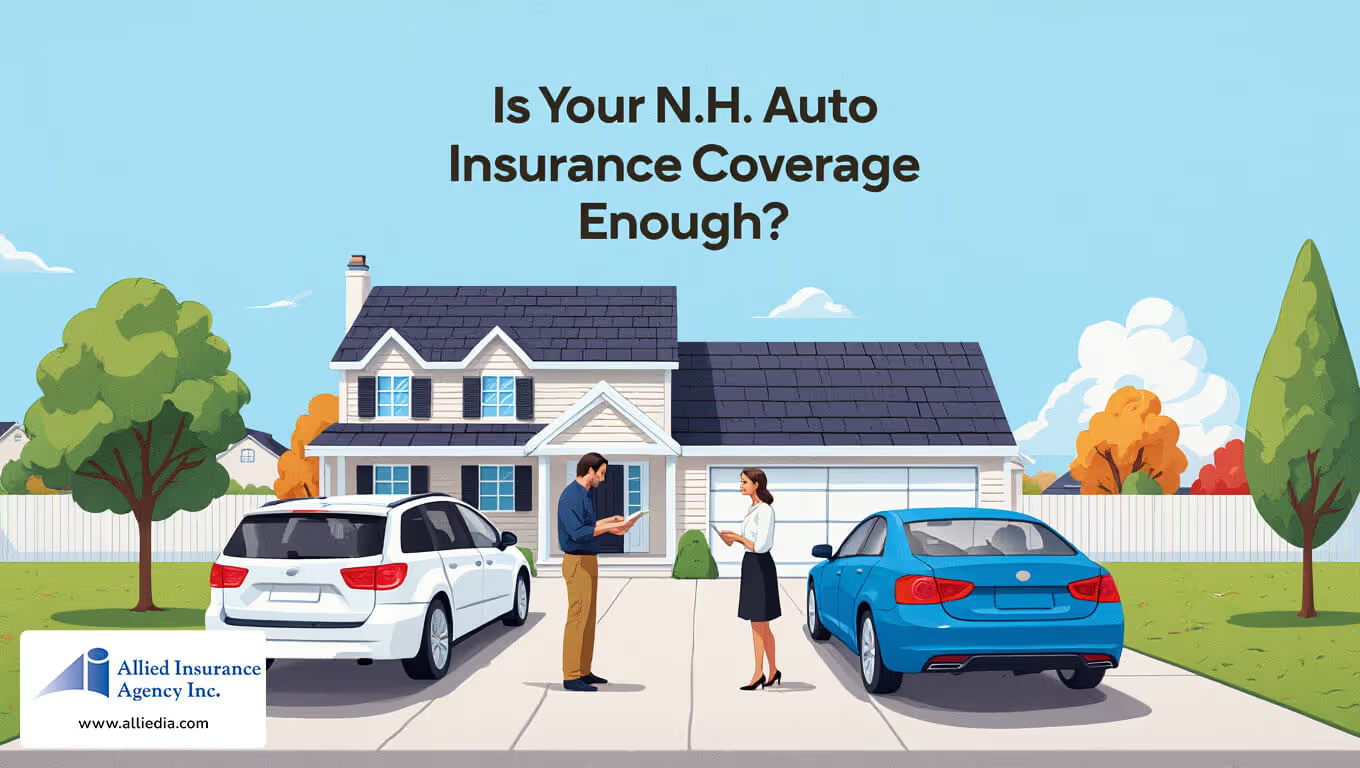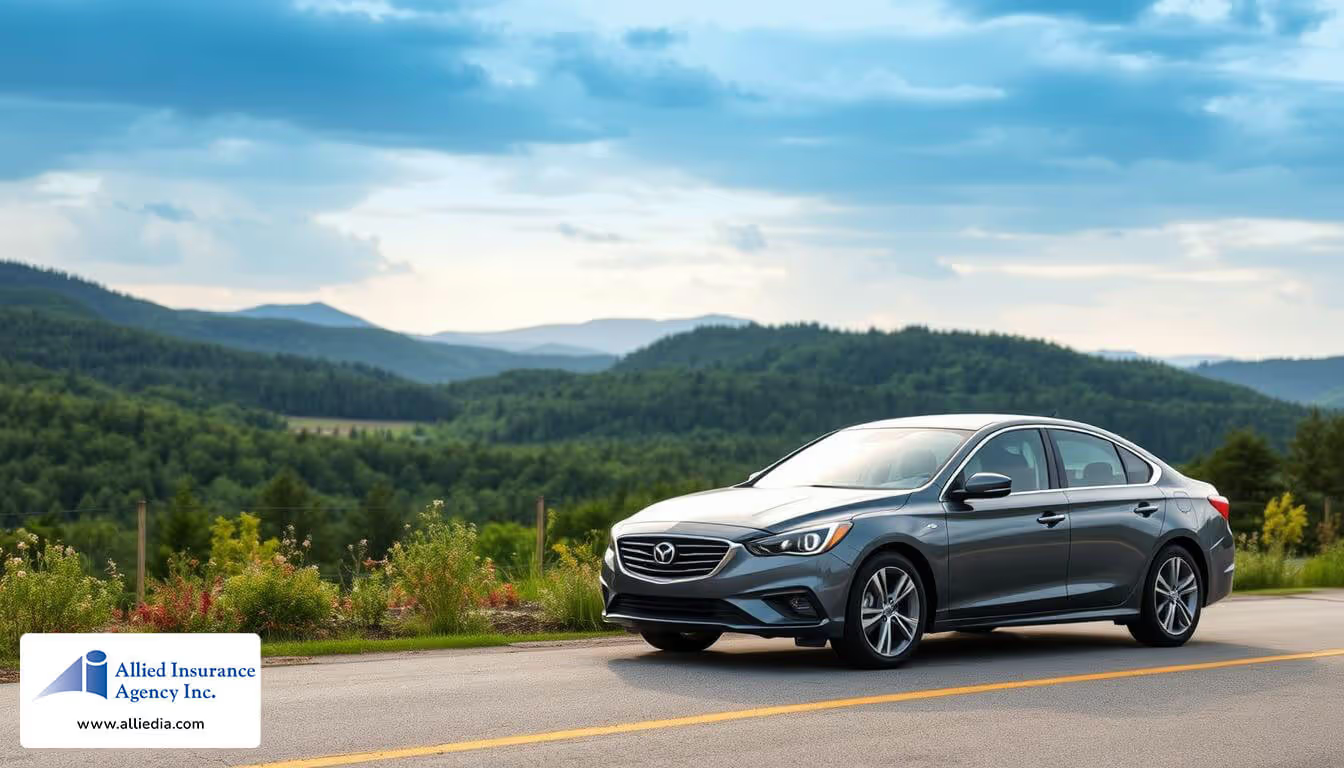
New Hampshire Drivers: Discover Hidden Car Insurance Savings You’re Missing!
An independent agency in Concord, Bow, and Hooksett explains how the state's unique rules create uncommon opportunities for car savings while still protecting what matters.
New Hampshire does not require drivers to carry coverage, but it does require financial responsibility after a crash. Many people still choose car insurance to protect assets and peace of mind.
This guide turns complex policy language into easy steps. It previews high-impact strategies like bundling home and car, safe-driving telematics, defensive driving classes, low-mileage pricing, and trimming coverage on older vehicles.
An independent N.H. insurance agency can compare multiple options and match protection to each household's needs and budget. Rates vary by driving history, vehicle, mileage, and where a car is garaged.
Households often miss stackable savings and small policy tweaks that cut costs without exposing people to major losses. The goal is to optimize coverage, not just chase the cheapest rate.
Key Takeaways
- New Hampshire drivers must be ready to cover damages even if they skip coverage; many still buy car insurance for asset protection.
- Bundling home and car and using telematics or defensive driving can yield meaningful savings.
- Lowering coverage on older cars and shopping around can trim costs by hundreds yearly.
- Independent agents in Concord, Bow, and Hooksett help match coverage to needs and budget.
- Small, stackable adjustments often cut premiums without risking essential protection.
Why New Hampshire’s unique rules create big savings opportunities for drivers
Drivers in this state can opt out of a policy, but they must be able to pay for damage if they cause an accident. That mix — optional policies plus required financial responsibility — makes choice and right-sizing coverage more important than in many other places.
Understanding a state where coverage is optional but financial responsibility matters
New Hampshire typically posts lower average rates for full coverage—about $1,823 yearly in some datasets—well below the national average. That lower baseline gives New Hampshire drivers room to layer smart savings without leaving significant protection gaps.
How lower statewide rates set the stage for smart savings
City-to-city differences are modest, so budgeting is more predictable. Still, violations such as DUI can spike costs dramatically, so safe driving remains the most direct way to control insurance costs.
- Financial responsibility affects liability limits more than proof of funds.
- Bundling and telematics multiply savings when starting from lower rates.
- Commute length and Concord traffic patterns influence underwriters’ risk view.
This framework sets up the next sections, which translate rules into specific car insurance choices, discount programs, and local factors that matter most.

NH auto insurance discounts: the buyer’s guide overview
A strategic approach to available programs and policy choices can produce significant year-over-year savings. This short guide helps drivers parse common options and weigh trade-offs so coverage matches needs, not assumptions.
High-value savings categories include bundling home auto insurance with a single provider, telematics or safe‑driving programs, defensive driving courses, good-student credits, low-mileage pricing, and a claims-free history.
- Bundling home + car: typical savings 10%–25%.
- Defensive driving: about 10%–15% off for qualifying drivers.
- Telematics: immediate ~10% with potential up to 30% after sustained safe driving.
- Reducing physical damage on older cars: can trim 10%–30% when risk tolerance allows.
An independent agency evaluates multiple companies to find best combinations for each household. They check stacking rules, paid-in-full and paperless credits, multi-vehicle packages, and student options.
Drivers should prepare license numbers, VINs, odometer readings, and prior policy declarations to speed accurate quotes and verify eligibility.
Contact Allied Insurance Agency for a free auto insurance quote to compare providers and confirm the net savings while keeping the right level of protection.
Minimum coverage, full coverage, and what the state expects today
Choosing the right level of protection begins with knowing the state's minimum legal requirements and what gaps they leave.
NH minimum liability limits and required protections at present
The state requires minimum coverage of $25,000 bodily injury per person, $50,000 bodily injury per accident, and $25,000 property damage.
Medical payments (MedPay) must be at least $1,000. Uninsured/underinsured motorist (UM/UIM) limits must match chosen liability limits.
Minimum coverage helps pay others’ losses up to those limits. It does not protect a driver from amounts above those caps. Damages beyond limits can become an out-of-pocket obligation under the state's financial responsibility rules.
When full coverage makes sense for your vehicle and budget
Full auto insurance coverage = liability plus comprehensive and collision on the vehicle. Common deductibles range from $500 to $1,000; higher deductibles lower rates but raise out-of-pocket costs after a loss.
- Keep full coverage for newer cars, financed vehicles, or those with meaningful market value.
- Consider dropping comp/collision on older, low-value cars to cut costs.
- Add practical options like roadside assistance or rental reimbursement when they fit usage patterns.
Drivers in Concord, Bow, and Hooksett should tailor limits by vehicle age, annual mileage, and garaging. Review UM/UIM carefully— it protects against others with inadequate coverage. Periodic policy reviews keep protection aligned with changing assets and rates.
Smart driver savings most New Hampshire motorists miss
Many Granite State motorists overlook simple behavior changes that lead to real premium cuts. This section explains practical, stackable moves that help lower costs while keeping strong coverage.
Defensive driving and good student discounts in Concord, Bow, and Hooksett
Approved defensive driving courses typically reduce premiums by 10%–15%. Look for state‑approved programs offered through local community colleges and driving schools.
Good student discounts reward grades. Families should keep GPA records and school letters ready for renewal. Students who live home‑garaged while at college often qualify for extra savings.
Telematics and safe‑driving programs
Telematics tracks braking, acceleration, phone use, and time of day. Many programs offer an immediate ~10% cut and up to 30% after a safe evaluation period.
Simple tips: brake smoothly, avoid peak‑hour routes, and never use a phone while driving. These habits improve scores and lower long‑term rates.
Low‑mileage and claims‑free advantages
Low annual mileage bands can earn better pricing; document odometer readings at renewal or use a connected report. A claims‑free history preserves lower rates, so weigh small claims against future cost increases.
Run an annual discount audit to align each driver’s credits and capture new programs that affect insurance new hampshire and local car insurance rates.

Policy-level strategies: bundling, deductibles, and timing your review
Small changes at the policy level can unlock steady savings and clearer protection for most households. These choices matter more in New Hampshire because they affect both cost and real-world recovery after a loss.
Home + auto bundling that typically saves 10%–25%
Bundling home and car with one provider streamlines billing and often reduces combined costs by about 10%–25% in the state. Families should compare the net price and test claim scenarios so a lower combined rate still meets needs.
Right‑sizing deductibles and older‑vehicle coverage
Raising comprehensive and collision deductibles can cut premiums when an emergency fund covers higher out‑of‑pocket costs.
Removing physical damage on an older car can trim 10%–30% of the premium if market value is low. Use a simple decision rule: if repair cost approaches vehicle value, consider dropping comp/collision.
Annual checkups, shopping, and what to bring
They recommend yearly reviews to update drivers, mileage, garaging address, and safety features. Competitive shopping after life changes often saves $300–$1,000 annually.
- Bring declarations pages, current deductibles, odometer readings, lienholder info, and safety feature lists.
- Verify how a bundle reacts if the home line changes or after a claim.
- Remember good account behavior — on‑time payments and paperless preferences — can improve rates over time.
Independent agents simplify comparisons across companies and confirm the true net effect of any bundle. Contact Allied Insurance Agency for a free N.H. auto insurance quote to align coverage with needs and savings goals.
Vehicle choice and features that influence your rate in the Granite State
A car's safety tech and repair complexity often matter more to underwriters than its sticker price. In new hampshire, insurers weigh crash test scores, repair costs, and theft risk when setting rates.
Safety tech, repair costs, and why some SUVs are cheaper to insure
Advanced driver assistance systems and strong IIHS ratings reduce third‑party property damage and serious injuries. That can lower premiums.
The IIHS shows small SUVs have about an 8% lower third‑party property damage loss rate than larger pickups. Fewer costly claims often equals better insurance rates.
High-end technology can backfire. Expensive sensors or aluminum bodies raise repair bills, which pushes up costs after an accident.
Popular, economical-to-insure models seen across New Hampshire
Practical models like the Subaru Outback, Honda CR‑V, and Toyota RAV4 tend to rate competitively. They combine safety, modest repair costs, and steady resale value.
- Choose base trims to avoid costly sensors and premium parts.
- Document airbags, ABS, anti‑theft, and collision‑avoidance features on quotes to capture every available credit.
- Get pre‑purchase insurance estimates for short‑listed vehicles to prevent surprises at delivery.
Large pickups often cost more to insure because they cause greater property damage and use heavier, pricier parts. Adding young drivers or high‑performance models will also raise rates significantly.
Tip: Reassess coverage as a vehicle ages and balance comp/collision decisions with total ownership costs—fuel, maintenance, depreciation, and insurance—so drivers keep protection that fits budgets and risks.
Local factors in Concord, Bow, and Hooksett that can change your premium
Local patterns — from rush‑hour bottlenecks to theft hotspots — directly shape what drivers pay each month. Underwriters use commute length, claim density, and nighttime parking when they price policies.
Commute distance, traffic patterns, and claim trends
Longer commutes into Concord and frequent rush‑hour driving raise exposure to accidents and increase rates. Short, off‑peak trips often qualify for lower bands.
Area claim trends matter. If a neighborhood shows more claims, companies treat that ZIP code as higher risk and adjust pricing accordingly.
Crime rates, garaging, and neighborhood risk
Theft and vandalism rates change premiums. Secure garaging, good lighting, and anti‑theft devices reduce loss probability and can support better pricing.
Even within the same household, Bow’s heavier congestion or Hooksett’s lower claim density can produce different bills under one policy.
Practical steps and a quick next step
- Keep odometer and commute details current to capture low‑mileage pricing.
- Upgrade parking security to document lower theft risk.
- Compare consistent quotes from several companies to find the best rate.
Some families have saved nearly 20% by bundling home auto insurance and updating risk details. Contact Allied Insurance Agency for the best N.H. auto insurance rate quote and a local review of coverage and rates.

How to stack NH discounts and get a precise quote today
Stacking the right credits and policy choices turns small savings into meaningful annual reductions for New Hampshire drivers.
What to gather
Start by assembling documents: driver's license, recent driving history, VINs, trim and safety features, odometer readings, and prior policy declarations.
Also include garaging addresses and any lienholder info so quotes reflect the true risk and title status.
Align coverage with needs
Match liability and UM/UIM limits to asset protection goals. Confirm MedPay meets the state minimum of $1,000.
Decide on comp/collision based on vehicle value, lender rules, and how much risk a household will accept.
Stacking approach and verification
Combine bundling, telematics enrollment, defensive driving, good‑student credits, low‑mileage bands, and multi‑vehicle packages to layer savings.
Always compare the net household outcome — verify a home + car bundle actually lowers total costs versus separate policies and check the effect on rates after a claim.
Next steps
Standardize quote inputs so companies return apples‑to‑apples results. Pick deductibles that balance premium relief with emergency‑fund comfort.
Submit documents, confirm mileage bands, schedule an annual review, and contact Allied Insurance Agency for a free auto insurance quote to find best options and savings.
Conclusion
Stacking practical credits and right‑sizing protection yields the largest, most reliable savings for most households.
New Hampshire’s lower baseline rates and flexible rules make layering savings especially effective. Verify minimums, set liability and UM/UIM to match assets, and choose comp/collision only when it makes sense for the car.
Proven levers include bundling home and car with one provider, enrolling in telematics, completing defensive driving, confirming low‑mileage bands, and keeping a clean driving record.
Review policies yearly, gather documents, request quotes from multiple companies, and prioritize the highest‑impact moves first. For local help in Concord, Bow, Hooksett, and across the state, contact an independent agency for an objective comparison and solid customer satisfaction.



